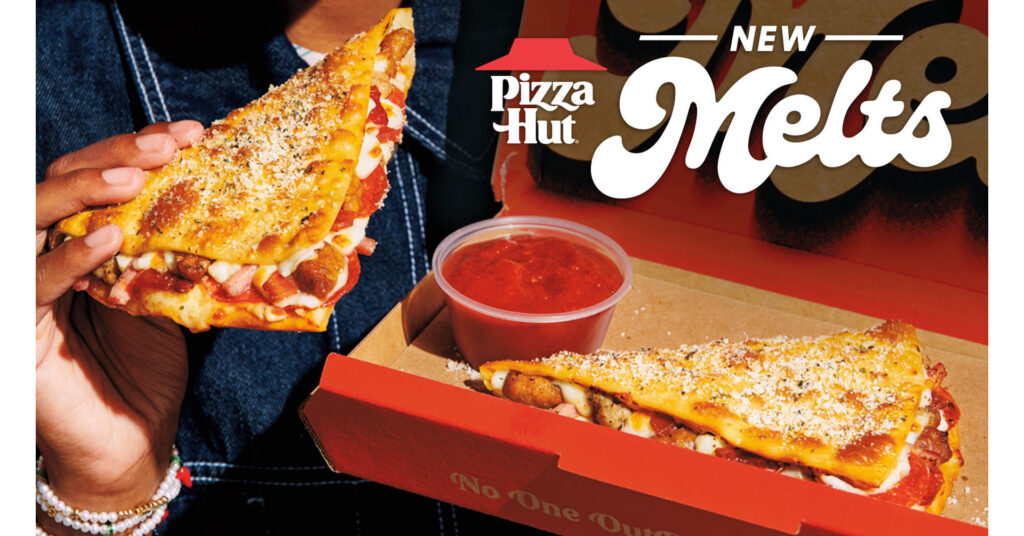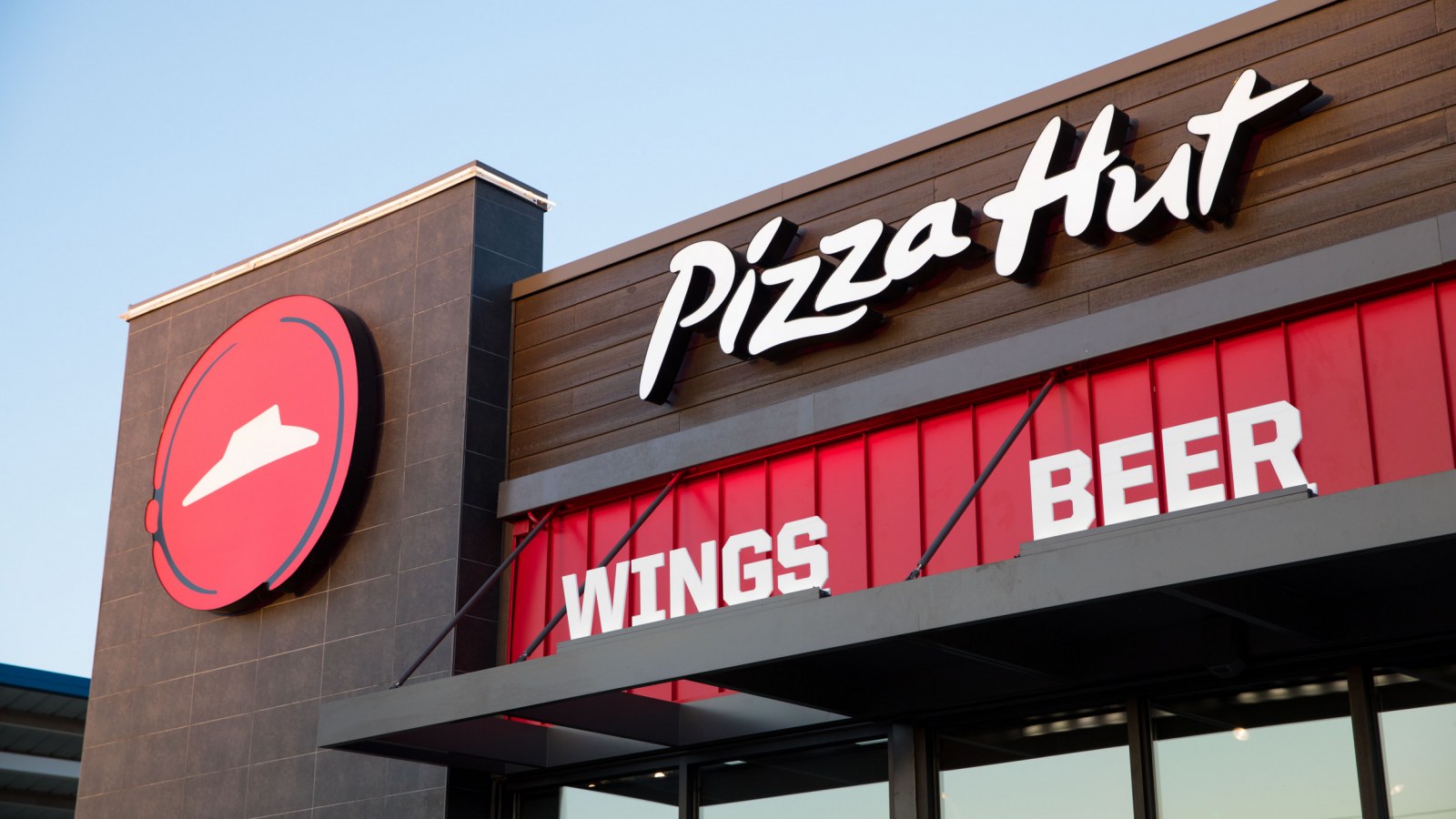Pizza Hut is an American multinational restaurant chain and international franchise that was founded in 1958 in Wichita, Kansas by Dan and Frank Carney. It is the world’s largest pizza chain, with over 18,000 restaurants in 100 countries. Pizza Hut is known for its iconic red roof logo and its wide variety of pizza options, including its classic thin crust pizza, pan pizza, and stuffed crust pizza.

Pizza Hut began as a small pizzeria in Wichita, Kansas, but it quickly expanded across the United States. In 1969, Pizza Hut opened its first international restaurant in Mexico. Pizza Hut continued to expand throughout the 1970s and 1980s, and it became the world’s largest pizza chain in 1987.
Pizza Hut is known for its innovative pizza products. In 1974, Pizza Hut introduced its Pan Pizza, which is a deep-dish pizza with a thick, buttery crust. In 1995, Pizza Hut introduced its Stuffed Crust Pizza, which is a pizza with a crust that is filled with melted cheese. Pizza Hut has also introduced a variety of other pizza products over the years, such as the Bigfoot Pizza, the Edge Pizza, and the Ultimate Supreme Pizza.
Pizza Hut is also known for its family-friendly atmosphere. Many Pizza Hut restaurants have play areas for children, and the chain offers a variety of family-friendly promotions. Pizza Hut is also a popular destination for birthday parties and other special occasions.
Pizza Hut is a major player in the global pizza market. It competes with other large pizza chains such as Domino’s Pizza, Papa John’s, and Little Caesars. Pizza Hut also faces competition from smaller, regional pizza chains and from independent pizzerias.
Despite the competition, Pizza Hut remains a popular choice for pizza lovers around the world. The chain is known for its high-quality pizza, its innovative products, and its family-friendly atmosphere.
Marketing Strategies of Pizza Hut
Pizza Hut employs various marketing strategies to attract and retain customers. Here’s a detailed overview of some of their marketing strategies:
1. Product Innovation
Product innovation is a significant aspect of Pizza Hut’s marketing strategy. The company continuously introduces new and unique products to attract customers and stay ahead of its competitors. For instance, in recent years, Pizza Hut has launched several limited-time offerings (LTOs) that have been well received by customers. One such example is the “Pizza Hut Melts,” a line of sandwich-pizzas that combine the taste of a pizza with the convenience of a sandwich. The Melts were introduced in response to changing consumer preferences, with many people seeking easier, more portable meals. This innovative product offering helped Pizza Hut tap into a new segment of customers who are looking for something different from the traditional pizza.

Another notable example of Pizza Hut’s product innovation is the “Pizza Hut Pie Tops,” a line of shoes that double as pizza ovens. Yes, you read that right! These high-tech sneakers allow customers to cook their pizzas while they wait for delivery. The Pie Tops were created in collaboration with a popular shoe designer, and they come equipped with a built-in oven and a Bluetooth connection that allows users to control the cooking temperature using their smartphones. While not intended for mass production, the Pie Tops generated immense buzz around the brand and further reinforced Pizza Hut’s commitment to innovation. By consistently introducing novel products and experiences, Pizza Hut creates excitement around its brand, builds brand loyalty, and differentiates itself from other players in the pizza industry.
2. Pricing Strategy
The company uses various pricing tactics to appeal to its target audience and increase sales. One of the ways Pizza Hut sets its prices is by offering discounts and promotions. For instance, the company frequently runs buy-one-get-one-free deals, discounts on certain menu items, and special offers during holidays and events like Super Bowl Sunday. Additionally, Pizza Hut often bundles its menu items together to create value meals that provide customers with complete meals at a lower cost than if they were to purchase each item separately. This strategy helps to attract price-conscious consumers and encourage them to make larger purchases.
In addition to discounts and promotions, Pizza Hut also employs dynamic pricing, which involves adjusting prices based on demand. The company uses data analytics to monitor sales patterns and adjust its prices accordingly. For example, during peak hours or days, Pizza Hut may raise its prices slightly to maximize profits, knowing that customers are more willing to pay a premium for convenience and speed. Conversely, during slower periods, the company may lower its prices to stimulate demand. This approach allows Pizza Hut to optimize its revenue streams and better manage its resources. By implementing these pricing strategies, Pizza Hut can effectively compete in the highly competitive pizza market while ensuring profitability.
3. Digital Marketing
The company leverages various digital channels to connect with its target audience, build brand awareness, and drive sales. Pizza Hut uses social media platforms such as Facebook, Instagram, and Twitter to engage with customers, share updates, and promote its products. The company also invests in search engine optimization (SEO) to ensure that its website appears at the top of search results for relevant keywords, making it easily accessible to potential customers. In addition, Pizza Hut utilizes email marketing campaigns to keep subscribers informed about new menu items, special deals, and upcoming events.
One of the latest examples of Pizza Hut’s digital marketing efforts is its partnership with influencers and content creators on social media. The company collaborates with popular personalities on platforms like TikTok and YouTube to showcase its products in an authentic and engaging way. Another example is Pizza Hut’s use of augmented reality (AR) technology to enhance its digital marketing efforts. The company developed an AR filter for Snapchat that allowed customers to virtually try on pizza-themed sunglasses, creating a fun and interactive experience that encouraged user-generated content and sharing. By embracing digital marketing strategies, Pizza Hut stays relevant, increases brand recognition, and drives sales in the competitive pizza industry.
4. Loyalty Programs
Loyalty programs are a crucial aspect of Pizza Hut’s marketing strategy, aimed at retaining existing customers and encouraging repeat business. The company’s loyalty program, called “Hut Rewards,” offers customers points for every dollar spent, which can be redeemed for free food and drinks. Members also receive exclusive discounts, birthday rewards, and early access to new menu items. To make the program more appealing, Pizza Hut has introduced tiered membership levels, with higher tiers offering additional benefits such as free desserts, bonus points, and priority service.
Pizza Hut has been continuously innovating its loyalty program to stay ahead of the competition. Additionally, Pizza Hut has partnered with popular ride-sharing services like Uber Eats and Grubhub to offer loyalty points for delivery orders placed through those platforms. By integrating its loyalty program with third-party delivery services, Pizza Hut can reach a wider audience and increase customer retention. These initiatives have helped Pizza Hut strengthen its position in the competitive pizza market and maintain a strong customer base.
5. Collaborations and Sponsorships
Collaborations and sponsorships are a significant component of Pizza Hut’s marketing strategy, enabling the brand to expand its reach and connect with new audiences. One notable collaboration was Pizza Hut’s partnership with the National Football League (NFL), making it the official pizza sponsor of the league. This partnership gave Pizza Hut exposure during NFL games and allowed it to leverage the popularity of football to promote its brand. Pizza Hut also collaborated with popular streaming services like Netflix and Hulu, offering special deals and discounts to their shared customers.
In recent years, Pizza Hut has continued to pursue innovative collaborations and sponsorships. For example, the brand teamed up with the popular video game Fortnite, offering players the chance to win free pizzas and other rewards. Pizza Hut also partnered with the music streaming platform Spotify, creating a playlist that pairs songs with specific pizza toppings. By aligning itself with popular culture and entertainment brands, Pizza Hut can appeal to a younger demographic and generate buzz around its brand. Through these collaborations and sponsorships, Pizza Hut can differentiate itself from competitors, build brand awareness, and drive sales.
6. Local Marketing
Pizza Hut employs various tactics to target local audiences, including geo-targeted advertising, local events sponsorship, and community involvement. For instance, the brand participates in local festivals and charity events, helping to raise funds and awareness for local causes. This not only enhances Pizza Hut’s reputation but also helps to create a loyal customer base.
Recently, Pizza Hut has taken its local marketing efforts to the next level by leveraging technology to better understand local preferences and behaviors. The brand uses data analytics to identify popular toppings and flavors in different regions, allowing it to create customized menus that cater to local tastes. Moreover, Pizza Hut utilizes social media listening tools to track local conversations and respond promptly to customer feedback and concerns. By embracing local marketing strategies, Pizza Hut can effectively engage with diverse customer segments, increase brand relevance, and ultimately drive sales across various markets.
7. Health-Conscious Options
Pizza Hut has been adapting to the growing demand for healthier food options by incorporating health-conscious choices into their menu. This marketing strategy aims to attract health-oriented consumers who typically avoid fast food due to its perceived unhealthiness. Pizza Hut has introduced vegetarian and vegan pizzas, salads, and sides, all made with fresh and nutritious ingredients. They have also removed artificial flavors and colors from their menu items. In addition, they have created a “Fit Favorites” section on their menu, featuring dishes under 600 calories.
Some of the latest examples of Pizza Hut’s health-conscious options include their “Skinny Pizza” line, which features a crust made with whole wheat flour and topped with healthier ingredients like mushrooms, bell peppers, and olives. They have also added plant-based meat alternatives, such as Beyond Meat sausage and pepperoni, to their menu. Furthermore, Pizza Hut has partnered with fitness influencers and wellness experts to showcase how their healthy options can fit into an active lifestyle. By catering to the health-conscious crowd, Pizza Hut can expand its customer base and appeal to individuals who prioritize their wellbeing without sacrificing taste.
Pizza Hut’s marketing strategies are designed to remain competitive in the highly competitive fast-food industry and adapt to changing consumer preferences. They focus on a mix of product innovation, pricing, technology, and community engagement to build a strong brand presence and retain customer loyalty.
Marketing Mix of Pizza Hut
The marketing mix, often referred to as the 4Ps (Product, Price, Place, Promotion), is a framework that businesses like Pizza Hut use to develop and implement their marketing strategies. Let’s break down the marketing mix of Pizza Hut in detail:
1. Product
Product Variety and Customization: Pizza Hut offers a diverse range of pizza options, allowing customers to choose from various crust types, toppings, and sizes. They also provide specialty pizzas like the “Stuffed Crust” and “Pan Pizza,” ensuring there’s something for everyone. Furthermore, they often introduce limited-time or seasonal pizzas to keep the menu fresh and exciting.
Quality and Taste: A hallmark of Pizza Hut is the emphasis on quality and taste. They use fresh, high-quality ingredients, and their recipes are carefully crafted to provide a unique and consistent flavor experience. This commitment to taste is a key driver of customer loyalty.
Innovation: Pizza Hut is known for its innovative approach to product development. They frequently launch new and unique pizza offerings, such as the “Edge” pizza with toppings all the way to the edge or the “Beyond Italian Sausage” for a plant-based option. Such innovations cater to evolving consumer tastes.
Health-Conscious Options: Recognizing the importance of health-conscious choices, Pizza Hut provides options with lower calorie counts and reduced sodium and fat content. These options are clearly labeled on the menu, allowing customers to make informed choices.
Menu Evolution: Over the years, Pizza Hut has expanded its menu to include items beyond pizza, such as pasta, chicken wings, salads, desserts, and beverages. This diversification ensures that customers with varying preferences can find something to enjoy.
2. Price
Competitive Pricing: Pizza Hut adopts a competitive pricing strategy, offering a wide range of price points to cater to different customer segments. This inclusivity makes their products accessible to a broad audience.
Value Deals: The company frequently rolls out value-driven promotions, such as “Buy One, Get One Free” deals, combo meals, and family-sized packages. These offers are designed to attract price-conscious customers and encourage larger orders.
Online Discounts: Pizza Hut has a strong online presence, and they often provide exclusive discounts for orders placed through their website or mobile app. This not only promotes digital ordering but also rewards loyal online customers.
3. Place (Distribution)
Delivery Services: Pizza Hut places a significant emphasis on its delivery services. They have a well-established network that ensures quick and reliable delivery to customers’ homes. Utilizing technology, they offer online ordering with real-time tracking, enhancing the convenience of the delivery experience.
Takeout Options: In addition to delivery, Pizza Hut promotes takeout services, both in-store and online. Customers can conveniently order and pick up their favorite pizzas, making it an excellent option for those on the go.
Physical Locations: Pizza Hut maintains a global presence with dine-in restaurants, takeout hubs, and delivery centers. The selection of physical locations is strategic, often focusing on high-visibility areas and accessibility to target markets.
International Expansion: As part of its global strategy, Pizza Hut adapts its distribution approach when entering international markets. This includes customizing menus to cater to local tastes, establishing new delivery networks, and adapting restaurant formats to align with cultural preferences.
4. Promotion
Digital Marketing: Pizza Hut invests heavily in digital marketing, offering a user-friendly website and mobile app. They employ email marketing campaigns, maintain a strong presence on social media platforms, and use online advertising to engage with customers. This approach allows them to reach their target audience effectively and efficiently.
Traditional Advertising: Alongside digital marketing, Pizza Hut utilizes traditional advertising channels such as television, radio, print media, and billboards. These avenues help them maintain a broad and diverse reach, connecting with customers who may not be as active online.
Loyalty Programs: Pizza Hut has established loyalty programs that reward repeat customers. Customers earn points for each purchase, which can be redeemed for discounts or free items. These programs encourage customer retention and repeat business.
Collaborations and Sponsorships: Pizza Hut has engaged in various collaborations and sponsorships with events, organizations, and popular culture entities. For example, they have been official sponsors of the NFL, collaborated with blockbuster movies, and released themed pizza boxes tied to video game launches. These partnerships generate excitement and create marketing buzz.
Community Engagement: Pizza Hut actively engages with the community through charity initiatives, local sponsorships, and environmental efforts. These activities contribute to the brand’s positive image and its reputation for social responsibility.
In summary, Pizza Hut’s success is not only attributed to the high-quality and diverse products they offer but also to their strategic approach to pricing, distribution, and promotion. Adapting to local tastes and preferences in international markets, and their focus on customer satisfaction and community engagement, further enriches their comprehensive marketing mix.
Also Read: Marketing Strategies and Marketing Mix of Yum Brands
To read more content like this, subscribe to our newsletter
Go to the full page to view and submit the form.


